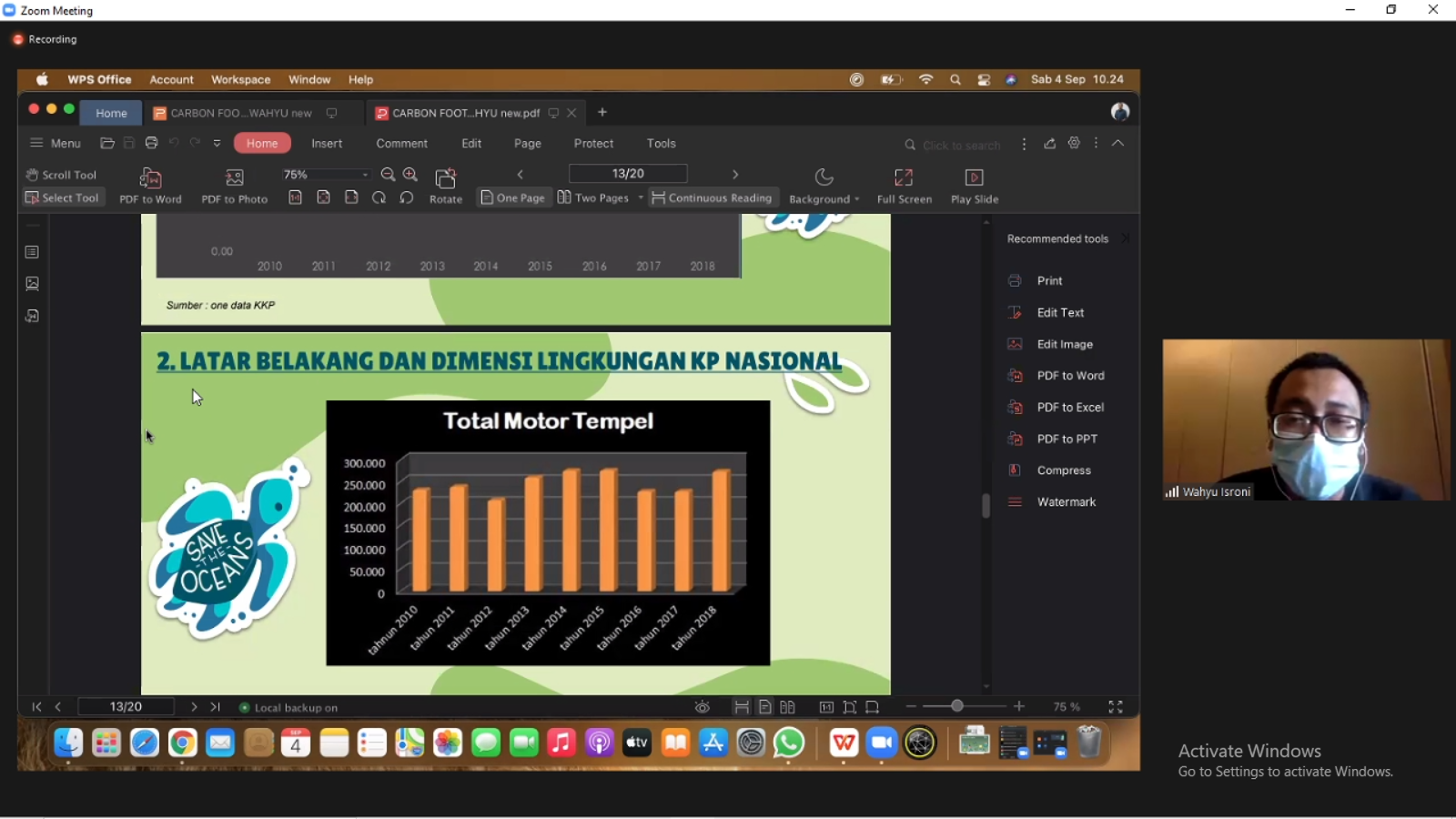UNAIR NEWS – According to the World Resource Institute (WRI) in 2018, Indonesia was ranked 8th as the world’s largest emitter of greenhouse gases. It is very ironic that Indonesia, which is said to be the lungs of the world with carbon credits reaching 70-80%, also contributes a large amount of carbon gas to the world.
In this regard, on Saturday, September 4, 2021, the BEM (Student Executive Board) of the Faculty of Fisheries and Marine Sciences (FPK) through the Department of Strategic Studies and Action (Kastrat) held another study to discuss the Carbon Footprint. Entitled PSBB (Casual Discussion with FPK BEM), the study presented Wahyu Isroni S.Pi., M.P., as a lecturer of FPK UNAIR.
Starting his presentation, Wahyu explained that the Carbon Footprint itself is the total amount of greenhouse gases (CO2 and Methane) produced by human activities. He revealed that global warming due to the greenhouse effect cannot be separated from the increase in carbon gas emissions due to human activities coupled with deforestation in Indonesia.
He also explained some of the causes of increasing carbon gas emissions in Indonesia related to fisheries and marine activities.
Mangrove deforestation
Wahyu explained that mangrove trees have a high ability to reduce carbon. Mangroves are able to absorb 52.85 tons of CO2/ha/year. He revealed that the condition of mangrove forests in Java and Sulawesi can be categorized as damaged. This condition significantly reduces CO2 absorption in Indonesia.
“In addition, currently cutting mangrove forests for new land clearing can reach 52,000 hectares per year. Of course, CO2 absorption in Indonesia will decrease drastically,” he said.
Loss of seagrass beds
He explained that in addition to mangroves, the estuary ecosystem also has a high CO2 absorption capacity, including seagrass beds. Seagrass beds are able to absorb 6.59 tons of C/ha/year and 24.13 tons of CO2/ha/year. Since seagrass is on the surface of the estuary, the potential for damage to seagrass beds is also very high due to waste and human activities.
“If you refer to the Ministerial Decree of Environment and Forestry number 200 of 2004, the status of seagrass beds in Indonesia is categorized as Unhealthy,” he said.
Fishing vessel operations and tourism
Based on his research, the tourism sectors and fishing vessels also contribute quite a lot of carbon. He explained that tourism transportation and vessel operations can produce carbon.
“In addition, based on the data, the number of outboard and inboard motorboats can reach 500,000 in total. Imagine if in one day all sail together in an area, how much carbon can be produced?” he said.
Depletion of fishery stock
The depletion of fish stocks in several Fisheries Management Areas for Fishing (WPPN RI) makes fishermen have to go further to the sea to get fish. This will directly have an impact on increasing gas emissions due to motors from ships.
“The phenomena above show that the eradicators of carbon footprints have been reduced one by one. On the other hand, there is an increase in carbon emissions. If we don’t change our behavior immediately, it’s just a matter of time,” he concluded.
Author: Ivan Syahrial Abidin
Editor: Nuri Hermawan (YA/AP)





